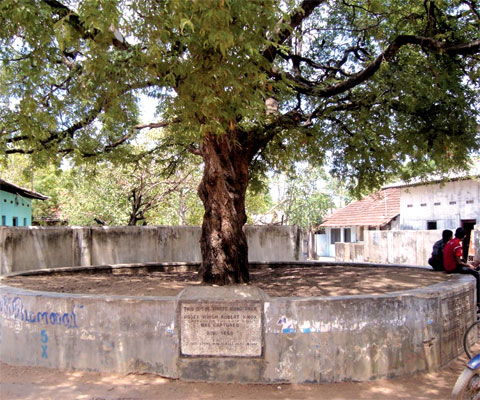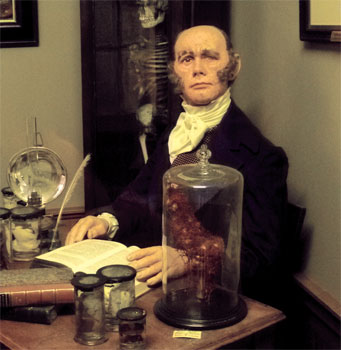Knox's tree
by Sumana Saparamadu
When I wrote about the oldest historical tree (December 15) I
mentioned that there were a few other trees with a history and promised
to tell you about them. Here is one such tree with a history.

A tamarind tree in Mutur near Trincomalee has been named Knox's tree.
Who was Knox and what is his connection with this tree? Let me first
tell you about Knox.
Robert Knox was an English sailor working in a ship commanded by his
father, also known as Robert Knox. The ship was trading in the eastern
seas, when it was caught in a mighty storm off the coast of S. India and
the mast of the ship was damaged. This was in 1659.
Knox put the ship into Kottiyar Bay in Trincomalee and went up to
Muttur to get it repaired.
The men went ashore and the local people were very friendly.
Many months passed and the ship was still there. The King of Kandy
became suspicious and sent a Disawa to inquire. The Englishmen were
arrogant and did not treat the Disawa with respect although he was an
officer of the King. The Disawe arrested a few Englishmen and by some
indirect means made the ship's captain Robert Knox (Snr.) to come
ashore.
Captain Knox came ashore and was waiting for the Disawa in the shade
of a large tamarind tree when he was arrested. His son Robert Knox (Jnr.)
and 16 others were also arrested and taken to Kandy.
Captain Knox died soon after he was taken prisoner, but his son
Robert Knox (Jnr.) was kept a prisoner in the Kingdom of Kandy for 19
years, until he escaped through the jungle to Arippu and from there with
the help of the Dutch, to England.
|

Robert Knox |
On his return to England he wrote a book, A Historical relation of
Ceylon which was published in London in 1681. The book describes the
political, social and religious set up in the kingdom and the people's
beliefs and practices.
The book was widely read in England and inspired Daniel Defoe to
write Robinson Crusoe, the well-known novel in English.Englishmen who
governed Ceylon from the 1790s were very proud of Robert Knox and they
started looking for the tamarind tree under which Knox (Jnr.) was
arrested.
In 1893 the tree was found, identified and a tombstone was set up to
commemorate Knox's arrest under that tree.
When the Fauna and Flora Protection Ordinance was passed in 1937 the
tree was declared a protected tree, along with two others.
Unfortunately, Knox's tree was blown down in the great cyclone of
1958.
A sapling from the tree survives and marks the spot where Knox was
arrested and it is conserved.Tamarind trees, as they grow old, develop a
hollow within their trunks and this makes them easy prey to strong winds
and storms. Knox's tree too had developed a hollow and was blown down in
the cyclone. |

